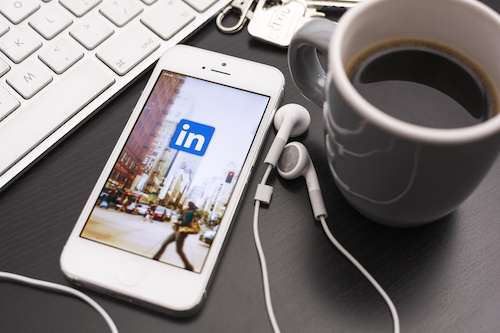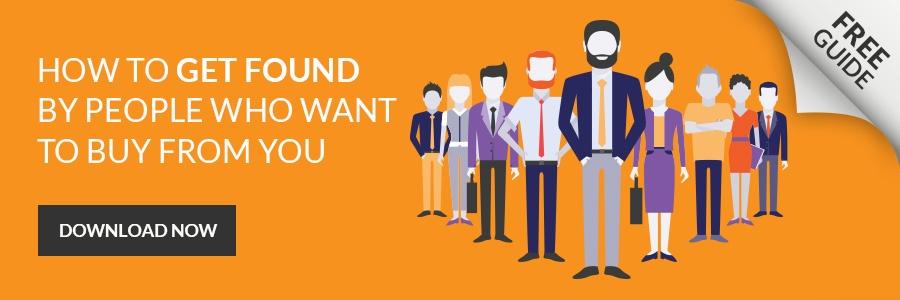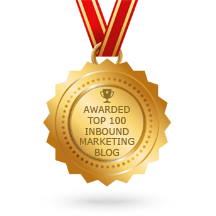
It’s a conundrum that can be the difference between profit and loss for small businesses: which social media platform should I focus my efforts on?
If you run a small business, it’s a question you know well. Time, money and resources are precious and any foray into social media marketing needs to show a return on investment. But how do you choose?
If your small business is in the B2B space, you would be interested to know that according to a study by Capterra, LinkedIn is the go-to platform for lead generation, with 44% of B2B marketers generating leads via LinkedIn. Facebook and Twitter trail behind at 39% and 33%.
Yet, according to the State of Inbound Marketing report, 42% of marketers say Facebook is critical or important to their business, meaning that many of your competitors and potential customers may be connecting on Facebook.
No wonder we’re prone to indecision when it comes to social media platforms. Yet they have become a crucial part of small businesses getting found by prospective customers and clients.
Recent research reveals that 94% of buyers conduct some type of research online before making a purchase. Of those, 76% will use at least three channels to research a company and engage with its content. If you want to get found in this environment, social media has become a compulsory resource for small business.
Let’s look at the two heavyweight contenders: Facebook and LinkedIn and see which one shapes up as the best option for your business:
By the Numbers: Facebook vs LinkedIn in Australia
- Facebook: 15 Million users
- LinkedIn: 3.7 Million users
The Pros
Low Setup Cost: It’s free to start a Facebook account and business pages can be set up at minimal cost. Any business can literally have a Facebook account ready in a few minutes without spending more than loose change.
Get Interactive: Global Facebook users have topped 1 billion and it has become one of the primary methods for companies to converse directly with customers, fans and followers in real time, swapping messages, videos and photos instantly.
Increase traffic to your website: Facebook allows you to post content and pages from your website directly into your news feed, directing traffic from your Facebook page to your website.
The Cons
A ‘Like’ is not a ‘Lead’: While 10,000 people may like one of your posts, there’s nothing to compel them to take any more meaningful action other than hitting the ‘Like’ button. For all of the popularity of your post, it’s possible for it to result in zero new leads or conversions.
Pay for Attention: It can be difficult to stand out from the crowd on Facebook, and changes to how Facebook Timelines work means not all your followers will see what you post. It can be difficult to organically build up a following and convert leads on Facebook.
Negative Nellies: We all imagine our Facebook pages filled with positive comments from raving fans. But the reality can be vastly different. Statistics show that people who have a bad experience with a business are 50% more likely to share it via social media than a person who has a positive experience. Be prepared for any dissatisfied customers to vent their frustrations on your Facebook page — for all of your followers to see.
Constant Conversation: Social media is a two-way conversation with your customers, and Facebook is the prime example. Once you start posting on Facebook you will be expected to reply to comments, questions and concerns from customers promptly — both positive and negative. The time and effort required to properly manage a Facebook page can be a drain on time and resources, something to keep in mind if you’re pressed for both.
The Pros
Positions You As An Industry Leader: LinkedIn has positioned itself as the world’s foremost resource for professionals (It’s tagline is literally ‘The World’s Largest Professional Network’). Being a regular LinkedIn user and contributor over time can position you and your business as an industry thought-leader and authority. It also helps you pick up on industry trends, new innovations and best practices that you can apply to your business.
Networking and Collaboration: By joining industry groups, contributing to discussions, publishing posts and sharing your content it’s possible to establish a powerful network of peers and potential collaborators — invaluable to growing your business and finding new B2B leads.
Backgrounding and Research: If you plan to pitch your products and services to a particular company or organisation, LinkedIn can be an invaluable resource. Even a rudimentary search on LinkedIn can reveal vital information about a company and the staff you should target as part of your sales pitch — assuming they have LinkedIn profiles, of course.
Recruitment: LinkedIn has emerged as a powerful recruitment tool, opening up your resourcing efforts to a potentially global audience. At any one time there are more than 6 million job advertisements active on LinkedIn, and 94% of recruiters use LinkedIn to vet potential candidates.
The Cons
Spam: LinkedIn users commonly report unsolicited Connection Requests, which are usually a front for spamming and dodgy sales tactics.
Pay to Play: Setting up a LinkedIn account and using its basic features is free. While it’s possible to maintain a strong LinkedIn presence using the free features, the top-shelf features are hidden behind a pricey paid subscription.
Lower Engagement Rates: The number of unique monthly LinkedIn visitors is 106 million. Impressive right? Compare that with the 1.7 billion active monthly Facebook users. Where interaction can happen like wildfire on Facebook, things take a little more time on LinkedIn.
The Verdict
Choosing between LinkedIn and Facebook is a bit like choosing between chocolate and vanilla ice cream. Both are delicious and satisfying, but preferences will vary amongst individuals.
If you’re wondering which platform to use, perhaps you should consider looking at the equation in a different way. Don’t ask where your business should be, instead ask: Which platform is my audience using? Knowing which platform is most popular amongst your new and prospective customers should be the deciding factor in choosing between Facebook and LinkedIn.
If you’re a B2B business, the more professional edge of LinkedIn and it’s networking capabilities may be a more suitable option. But if your services are B2C, perhaps the interactivity and engagement of Facebook will work better for you.
But the only way to know for sure is to research and understand the browsing and buying habits of your customers and learn which platforms they rely on when making purchasing decisions. Not sure how? Learn about developing Buyer Personas here.
It’s also worth mentioning that any foray into social media, regardless of the platform you choose, should be informed by a robust social media strategy. And who knows, a well planned and executed strategy may just give you the scope to use both platforms in a complementary and integrated way.


